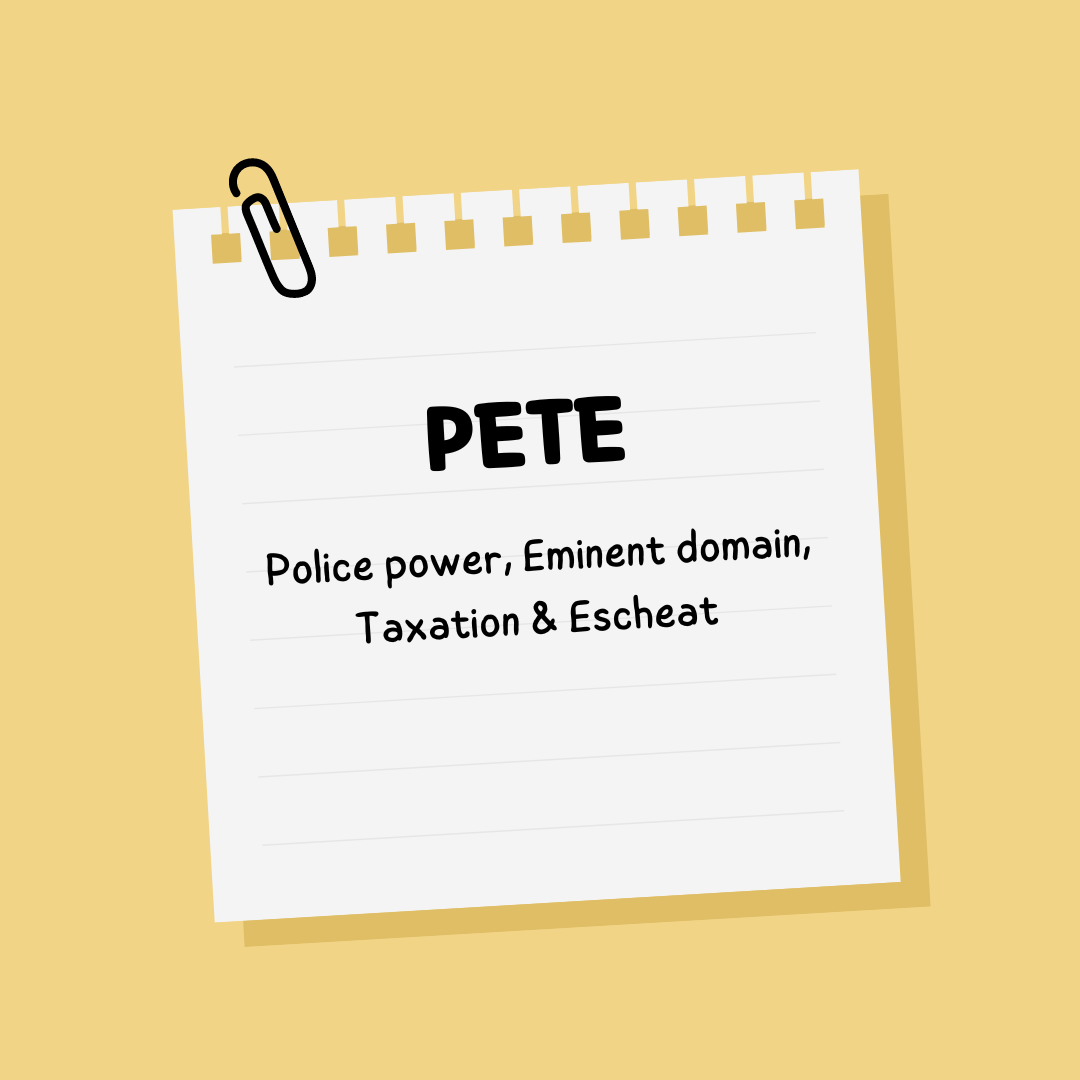What if I told you that your success on the real estate exam rests on your ability to grasp just seven abbreviations? You would call my bluff and ask that I prove it.
That is precisely what I plan to do.
Today, I will cover the seven must-know acronyms to help you pass your real estate exam, exploring the critical concepts they represent and arming you with a powerful tip for committing key terms to memory.
OLD CAR

You could either be a two-door coupe with 117 horsepower and a maximum speed of 120 mph—I am talking the 1965 Ford Mustang—or a first-generation minivan. The type of car you are depends on your ability to uphold your fiduciary duty as a real estate agent.
The phrase OLD CAR summaries agency and means:
O – obedience
L – loyalty
D – disclosure
C – confidentiality
A – accounting and
R – reasonable care
(Repeat the definitions)
Remember, agency is the binding relationship an agent has with their client, and it starts once an agreement is in place.
STUD/DUST

STUD or DUST both summarize the four elements of value. Use whatever acronym is easier to remember.
I prefer STUD because I never leave the house without mine.
STUD stands for:
S – Scarcity: The lower the inventory, the more valuable the houses will be. Consider a condition of a seller’s market. In a seller’s market, there are more buyers than available houses. This means sellers have greater bargaining power, allowing them to price houses higher.
T – Transferability: This refers to the seller’s ability to transfer a property’s title to a buyer. Let’s say you have a client who wants to sell a three-story waterfront mansion on the shores of L.A. with an infinity pool and indoor basketball court that cost $5 million to build. The house would be completely valueless, literally, from a sales position if they cannot transfer the title, meaning they cannot sell it.
U – Utility: Utility represents a house’s usability. Can the house be used in different ways? That translates to better value.
D – Demand: Are there several buyers interested in a home? That can cause the property’s value to skyrocket. What is the mathematics behind it? Increased interest = increased value.
MARIA
Breaking news: A local couple divorced over a heated debate about whether the built-in bookshelf is a fixture. The once happily married Mark and Emily Johnson found themselves at odds when it came time to sell their suburban home. The root of their argument is a custom-made bookshelf that spans an entire wall in their living room.
Mark, a lover of literature, insisted that the bookshelf was an integral part of the house and, therefore, a fixture that should remain with the property. Emily, on the other hand, argued that the bookshelf was a personal touch they added during their years of marriage and should move with them to their new home.
As the disagreement escalated, the Johnsons found themselves in a bitter divorce, with the fate of the bookshelf at the center of their legal battle. The case has garnered attention from real estate experts and legal professionals alike, as it highlights the importance of understanding what constitutes a fixture in a property sale.
So, what do you think? Is the bookshelf a fixture?

You can use the MARIA test to decide whether it is a fixture or not.
M – Method: What method is used to attach the bookshelf to the house?
A – Adaptability: Adaptability refers to how personal property has evolved into the house. If personal property has become an integral part of the home, it is a fixture that cannot be removed.
R – Relationship: What is the relationship between the individuals arguing over the fixture?
I – Intention: This questions the attacher’s intention when attaching personal property to the house.
A – Agreement: In any dispute, the winning card will always be the seller’s agreement with the buyer. If our couple agreed with the buyer to leave the bookshelf, it would be illegal to take it.
PETE

Now, for the fourth acronym, PETE.
PETE stands for:
P – Police power
E – Eminent domain
T – Taxation
E – Escheat
These four government powers outline the rights the government has over real estate.
Police power: is the government’s right to regulate your use of real estate in order to protect the public. Think of building codes. These are established to ensure citizens are dwelling in safe houses.
Eminent domain: is the government’s power to designate property for public use. Of course, the property owner will receive fair market compensation for the property.
Taxation: is the power to charge or levy property for government services.
Escheat: is the government’s right to own property if the owner dies without a will or descendants.
TTIP/PITT

TTIP or PITT, depending on which is easier for you to remember, summarizes the four factors that must exist before a joint tenancy can be established.
T – Title: all the property owners must appear on the title.
T – Time: the owners must all be written into the title simultaneously.
I – Interest: all the owners must have an equal share in the property.
P – Possession: all the owners have equal rights to live in or occupancy the property
Another thing to remember for the exam is that joint tenancy cannot be willed because the other owners have the right of survivorship. This means that if one of the owners passes, the remaining owners will receive their portion of the property.
UPTEE

In fifth place comes UPTEE. UPTEE is a term used to remember the bundle of rights an owner has when purchasing a property.
Every property owner has the right to:
Use the property however they want within legal perimeters, possess the property they have bought, transfer the property to anyone they will, encumber the property or use it as collateral to secure a loan, exclude anyone, or kick anyone out.
So, UPTEE
U – Use
P – Possession
T – Transfer
E – Encumber and
E – Exclusion
CLOC

You can use the phrase CLOC to remember the four factors needed for the validity of a contract in a real estate transaction.
Cloc stands for:
C – Competent parties: Are the individuals involved in the transaction legally able to establish a contract?
L – Lawful purpose: Is the contract being established for a legal reason? For example, you cannot establish a contract that states you will sell your house in exchange for drugs.
O – Offer and acceptance: Has an offer been made and accepted?
C – Consideration: Is there something of value that is offered in a contract?
Fast Track Your Real Estate Exam Success
And just like that, you know the seven key abbreviations needed to secure a pass in your real estate exam.
Next Steps
Ready to solidify your knowledge? Here’s your action plan:
1. Flashcards: Create flashcards for each acronym, including their meanings and key points.
2. Practice: Explain each concept using the acronyms as prompts.
3. Apply: Apply these acronyms to real-world scenarios.
4. Teach: Try these acronyms to a study partner – explaining concepts to others enhances your own understanding.
But what is the point of the 7 must-know acronyms if you don’t know how to put them to good use? Try out your new knowledge on our real estate practice exam.
Which acronym did you find most helpful? Do you have any memory tricks of your own for remembering key real estate concepts? Share your thoughts and experiences in the comments.







